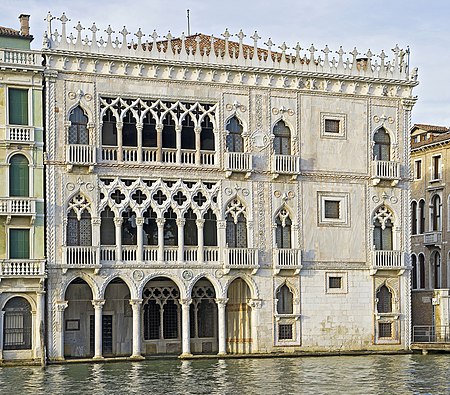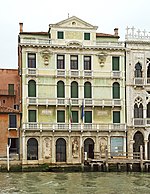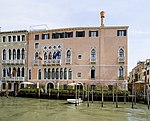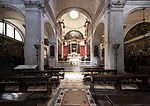Ca' d'Oro

The Ca' d'Oro or Palazzo Santa Sofia is a palace on the Grand Canal in Venice, northern Italy. One of the older palaces in the city, its name means "golden house" due to the gilt and polychrome external decorations which once adorned its walls. Since 1927, it has been used as a museum, as the Galleria Giorgio Franchetti. It has long been regarded as the best surviving palazzo in Venetian Gothic architecture, retaining all the most characteristic features, despite some losses. On the facade, the loggia-like window group of closely spaced small columns, with heavy tracery with quatrefoil openings above, uses the formula from the Doge's Palace that had become iconic. There are also the byzantine-inspired decoration along the roofline, and patterning in fancy coloured stone to the flat wall surfaces. The smaller windows show a variety of forms with an ogee arch, capped with a relief ornament, and the edges and zone boundaries are marked with ropework reliefs. The third act of Amilcare Ponchielli's opera La gioconda is set in the palace.
Excerpt from the Wikipedia article Ca' d'Oro (License: CC BY-SA 3.0, Authors, Images).Ca' d'Oro
Calle Ca' D'Oro, Mestre Venezia-Murano-Burano
Geographical coordinates (GPS) Address Nearby Places Show on map
Geographical coordinates (GPS)
| Latitude | Longitude |
|---|---|
| N 45.440555555556 ° | E 12.333888888889 ° |
Address
Ca' D'oro
Calle Ca' D'Oro
30170 Mestre, Venezia-Murano-Burano
Veneto, Italy
Open on Google Maps











